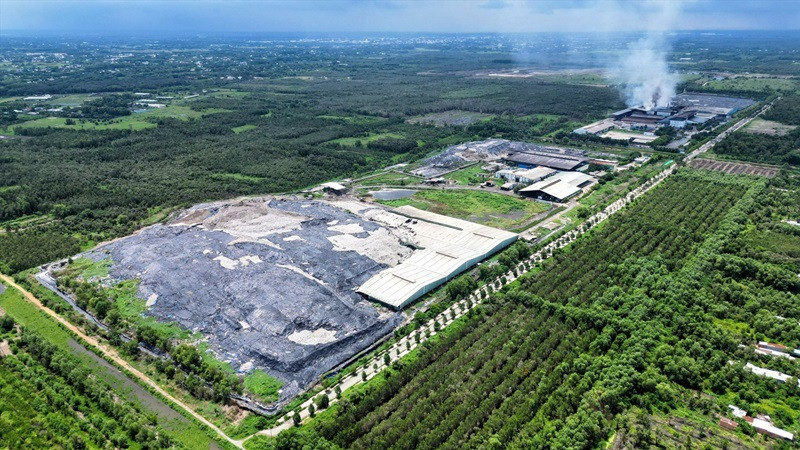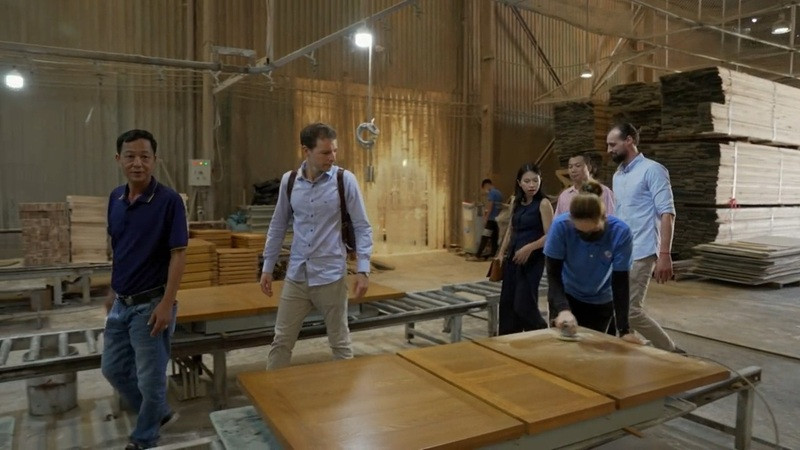Adidas shoes are everywhere; those iconic three stripes are a staple of athletic wear. But if you’ve always assumed your Adidas shoes were made in China, it’s time for an update. While China still plays a role, a strategic shift is underway, and Southeast Asia is firmly on the rise as a major hub for Adidas footwear production.
Why the Shift Away from Solely China?
China’s decades-long dominance in manufacturing made it incredibly convenient for companies like Adidas. However, several factors are making brands rethink putting all their production eggs in one basket:
- The Cost Factor: China’s Advantage Ebbs Away China’s economic boom was powered by incredibly low labor costs. This attracted companies worldwide, but those days are fading. As China develops, wages naturally rise to reflect a growing middle class. While still competitive, Adidas can find similar skill levels for a more significant cost advantage in places like Vietnam.
- Trade Tensions: Unpredictable Financial Impact The ongoing trade friction between China and the US creates enormous uncertainty. Tariffs levied on Chinese goods have real costs. A pair of shoes made in China and imported by Adidas into the US market might face a sudden, additional tax. This cuts into profit or forces them to raise prices for consumers. It makes financial planning a gamble, pushing companies towards more stable manufacturing locations.
- Lessons from COVID-19: The Vulnerability of a Single Source The pandemic was a brutal wake-up call. China’s strict zero-COVID policies led to sudden factory shutdowns and logistical nightmares. Companies like Adidas faced production delays, shipment cancellations, and stock shortages, even on goods they didn’t make in China. This exposed the danger of over-reliance on any single country. A “China Plus One” approach lets Adidas shift some production elsewhere if unforeseen events cripple Chinese production, adding a vital layer of resilience.
The Rise of Southeast Asia
Adidas’s focus on Southeast Asia isn’t a random decision. The region offers a compelling blend of advantages that make it the perfect partner for their “China Plus One” strategy:
- Proximity Matters: Unlike moving production to distant continents, Southeast Asia is relatively close to China. This minimizes logistical complexity and allows for better communication with existing teams. Adidas might even be able to keep some elements of existing supply chains in place, making the transition smoother.
- A Skilled and Cost-Effective Workforce: Crucially, Southeast Asian countries like Vietnam aren’t just offering the cheapest labor. They have a legacy of textile and garment production. This means workers familiar with sewing complex shapes, handling various materials, and the quality requirements for global footwear brands. It minimizes Adidas’s need for extensive retraining, saving cost and time.
- Government Support: A Welcoming Environment Many Southeast Asian countries understand the economic boost that comes from attracting companies like Adidas. Their incentives extend beyond simple tax breaks. They might offer subsidies on land in new industrial zones, assistance with worker training to ensure the right skills are available, or streamlined processes to make it faster for Adidas to get factories up and running. This proactive approach creates a very enticing environment for investment.
- The Power of Trade Deals: Agreements like the Regional Comprehensive Economic Partnership (RCEP) remove friction for trade within Southeast Asia and with key export markets. Lower tariffs and favorable customs treatment mean moving goods both between countries in the region and to major markets like Australia or Japan becomes easier and more cost-effective – a huge plus for Adidas.
It’s not just about the cheapest labor. Southeast Asia’s appeal for Adidas lies in that sweet spot: cost savings, skilled workers, geographic convenience, supportive governments, and agreements that boost trade flow. This blend makes the region a far more attractive option than simply chasing the lowest wages anywhere in the world.
Key Players in Southeast Asia for Adidas
Vietnam: A Frontrunner with Proven Success
Adidas already has large-scale, successful manufacturing facilities in Vietnam. This demonstrates Vietnam’s capability to deliver high-quality products at scale.
Vietnam’s heavy investment in infrastructure (ports, roads, industrial zones) signals a long-term commitment to manufacturing.
Workforce development programs ensure a growing pool of skilled workers to meet Adidas’s needs.
Beyond Vietnam: Other Potential Players
While Vietnam is a leader, other Southeast Asian countries like Indonesia and Cambodia are also attracting Adidas’s attention due to their competitive labor costs and growing pool of skilled workers. These countries offer additional options for Adidas to further diversify its manufacturing and tap into other regional advantages.
Why the Spotlight on Vietnam
Adidas’s focus on Vietnam remains justified. They have the proven success, infrastructure, workforce, and stability that form the ideal foundation for long-term manufacturing partnership. While other countries in the region are building their capabilities, Vietnam clearly stands out as a major hub in Adidas’s current and future manufacturing plans.
Potential Challenges
Vietnam and other Southeast Asian countries hold immense promise for Adidas. Yet, it’s crucial to approach this shift with a realistic perspective. Expanding into new regions always comes with its unique set of challenges:
- Skills and Scale: Even with existing textile experience, ensuring a massive workforce is trained to meet Adidas’s specific, exacting quality standards requires time and dedicated investment. Adidas will likely need to collaborate closely with local partners to develop specialized training programs.
- Beyond Infrastructure: It’s more than just modern factories. Reliable power grids, transportation networks, and streamlined logistics systems are also vital. Areas that may currently be adequate could experience strain as Adidas’s scale of production increases.
- Maintaining Consistency: Consumers expect an Adidas shoe to be the same high quality, whether it comes from Vietnam or Germany. Ensuring this consistency across manufacturing locations, especially early on, will be a demanding, but essential, task for Adidas to maintain its reputation.
- These challenges shouldn’t be seen as setbacks, but rather as hurdles Adidas will need to overcome strategically to make their Southeast Asia expansion a long-term success. Their track record suggests a commitment to meeting such challenges head-on.
Beyond Production: The Future of Adidas in Southeast Asia
Southeast Asia’s current role is crucial, seamlessly producing existing Adidas designs at high quality. But this might be just the beginning of a deeper, more integrated partnership.
From Production to Innovation Hub Vietnam, in particular, has ambitions to become more than just a manufacturing powerhouse. The country boasts a growing pool of engineers, designers, and material science specialists. This opens the door for a future where Adidas establishes research and development centers in Southeast Asia. Imagine Vietnamese designers collaborating with Adidas teams in Germany, contributing innovative concepts for the next generation of footwear.
Local Insights, Global Products Talent in Southeast Asia could bring fresh perspectives shaped by their unique markets and consumers. Adidas could leverage this local knowledge to create shoes perfectly tailored for Southeast Asian needs that then become sought-after worldwide.
Benefits Beyond the Bottom Line A deeper partnership has benefits beyond just shoes. This kind of collaboration means investment in Southeast Asia’s workforce and infrastructure. It helps upskill talented locals, potentially drawing top talent from around the world to innovation centers within the region. This kind of investment drives economic development and strengthens the relationship between Adidas and the nations where their shoes are taking shape.
Adidas could be a pioneer, moving their relationship with Southeast Asia far beyond basic manufacturing. A future where Vietnamese designers and Adidas’s central teams work hand-in-hand isn’t just a nice idea; it’s a smart strategy. Access to new talent pools, locally-driven insights, and investment in growing economies creates a win-win situation, ensuring Southeast Asia plays an ever-greater role in Adidas’s global success.
Adidas’s shift to include robust Southeast Asian manufacturing capabilities is a smart move. It balances cost, mitigates risk, and offers access to a motivated, skilled workforce. Southeast Asia is poised to become not just a lower-cost alternative to China but a powerful manufacturing force with the potential to reshape the global industry.
As consumers, it’s heartening to know Adidas isn’t only focused on locations but also on ethical and sustainable manufacturing. Regardless of the “Made in…” tag, you can feel good about supporting a brand that thinks beyond a single country when it comes to crafting your favorite shoes.



